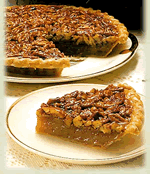
12/01/10 update: For current information, please download The 2010-11 Economic Report on Retail and Specialty Pharmacies and see Exhibits 2 and 3.
Before I take my usual summer break from blogging (alas, not also a work vacation), I want to share my estimates of 2008 pharmacy market share by company along with some predictions for 2009.
FYI, I will be attending the NACDS 2009 Pharmacy & Technology Conference from August 9 through 11 in Boston. Please email me (mailto:afein@pembrokeconsulting.com) if you'd like to set up a one-on-one meeting with me in Boston. And if you just bump into me there, please feel free to introduce yourself and tell me what you like (or hate?) about the Drug Channels blog.
OVERALL MARKET TRENDS
The NACDS economics department just released its very useful stats on the overall pharmacy market in 2008. They kindly make these data freely available for download here: 2008 Community Pharmacy Results.
Total 2008 pharmacy sales of prescription drugs were $253.6 billion, up only 1.8% from 2007. However, there was substantial variation among dispensing channel format. Chain pharmacy, mail order, and mass merchants grew in 2008, while supermarkets and independents shrank. See page 5 of the NACDS slides for more details.
MARKET SHARE BY COMPANY
The chart below shows my estimates of market share by company using the NACDS overall market size figure. (Note: NACDS does not provide market share by company, so don't blame them if you disagree.) Click here to download this market share chart as a PDF file that's suitable for framing in your beach house.

PREDICTIONS FOR 2009
The big will get bigger. The top six dispensing pharmacies – CVS Caremark, Walgreens, Medco Health Solutions, Rite-Aid, Walmart, and Express Scripts – accounted for about 60% of U.S. pharmacy dispensing revenues. Like it or not, the more efficient dispensing channels will continue to gain share of the pharmacy market.
Walmart will gain share. Based on recent trends, I expect that Walmart (including Sam's Club) will become the third-largest retail store-based pharmacy in 2009, surpassing Rite-Aid.
Supermarkets will keep losing share. The NACDS figures show supermarket pharmacy sales declining by 5.6% in 2008 following 2007's decline of 2.8%. This shift reflects the ongoing shakeout in the retail food industry and the growth of (you guessed it) Walmart, which now has a more than 20% share of U.S. retail grocery sales. The sales decline also reflects the willingness of these non-pharmacy dependent retailers to jump into the retail generic price war.
Independents will keep losing share, but more slowly. Independent pharmacies face numerous competitive challenges, including a loss of profitability from cash-pay customers. (See Pharmacy Profits and Wal-Mart.) However, the strong survivors will be better positioned than supermarkets and the second-tier mass merchandisers.
----
So, dear reader, any thoughts on these data before we head into the summer?











